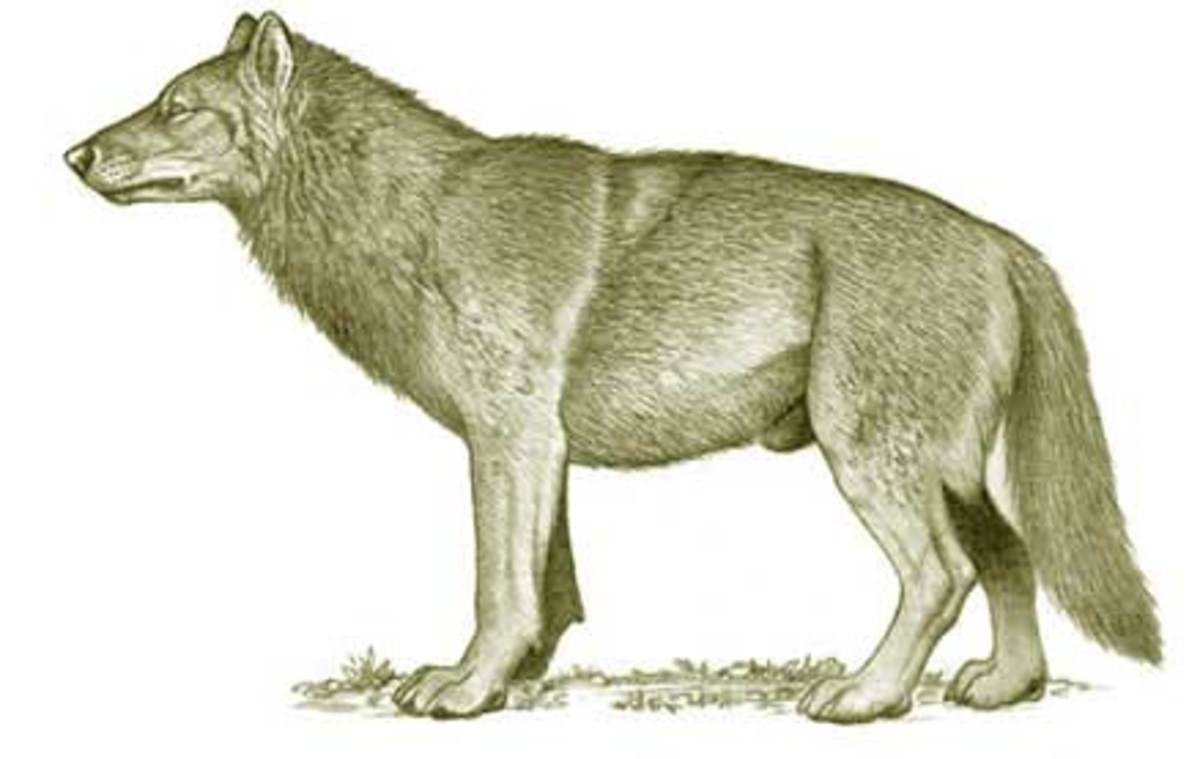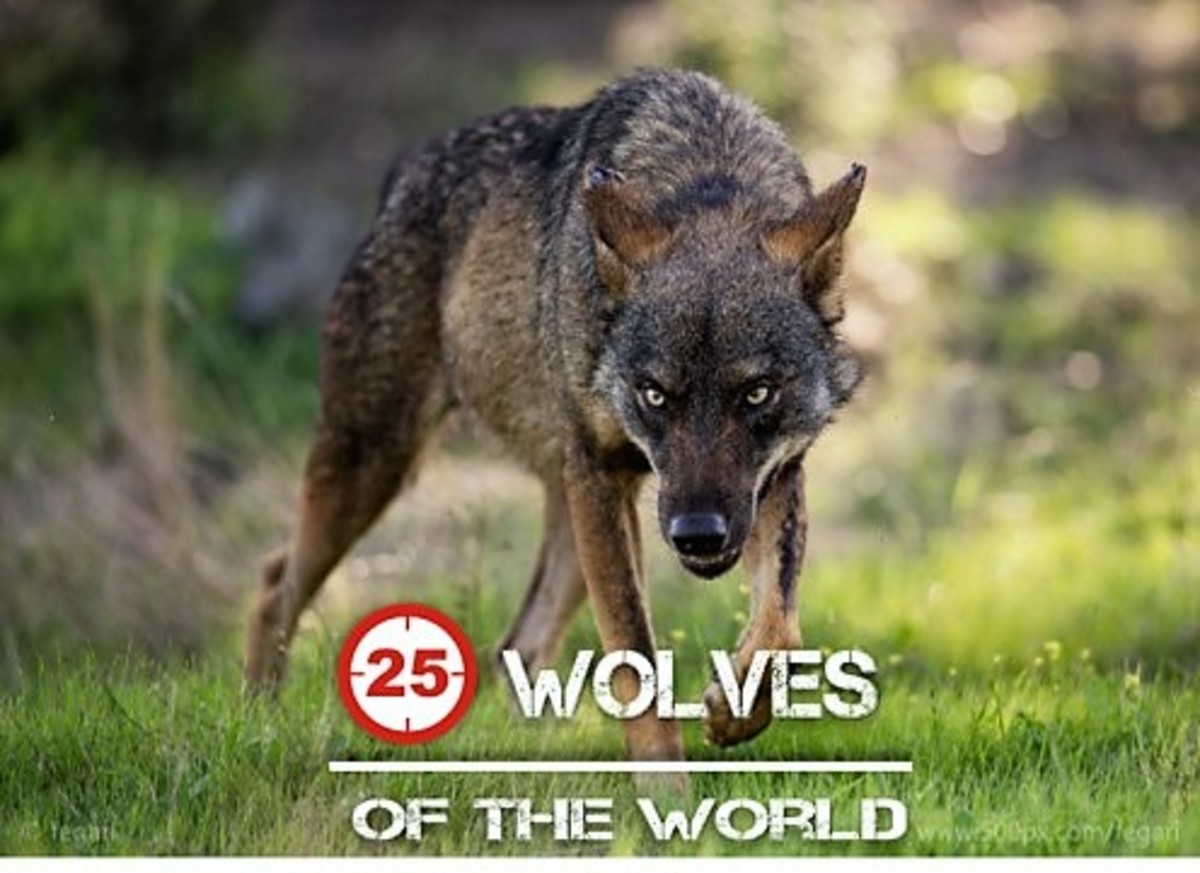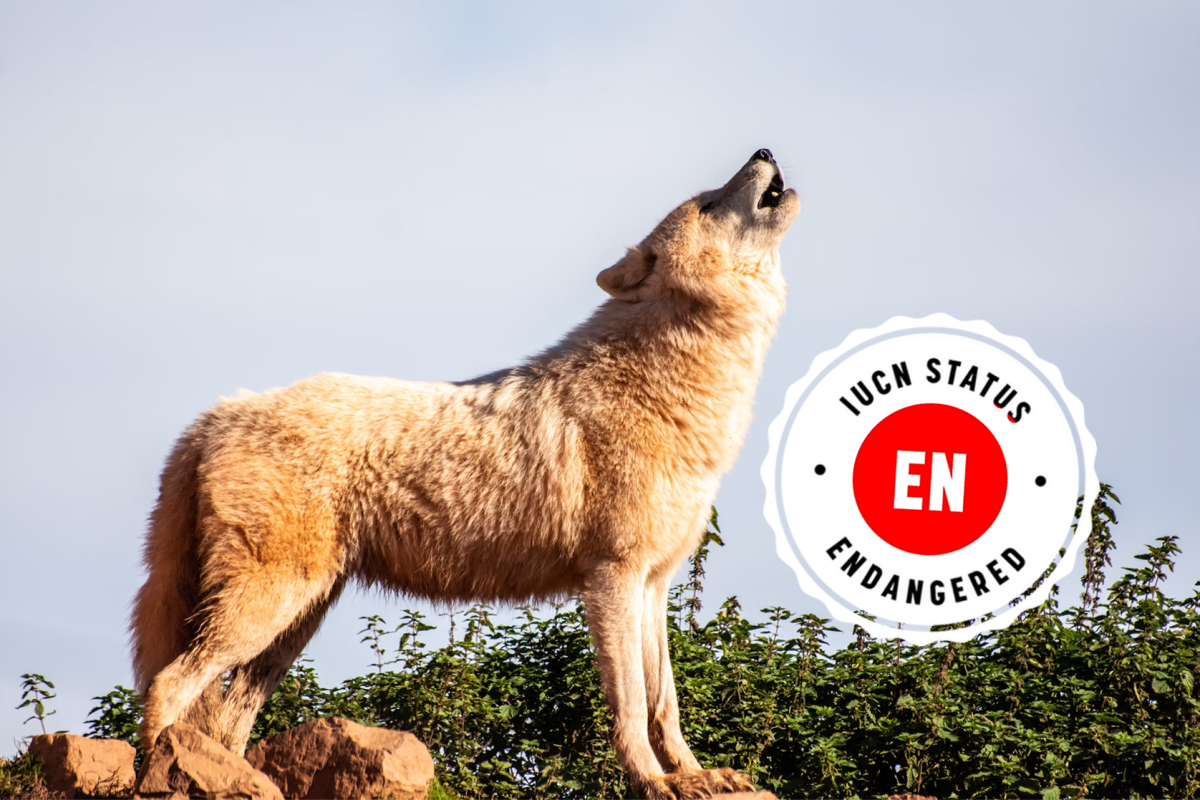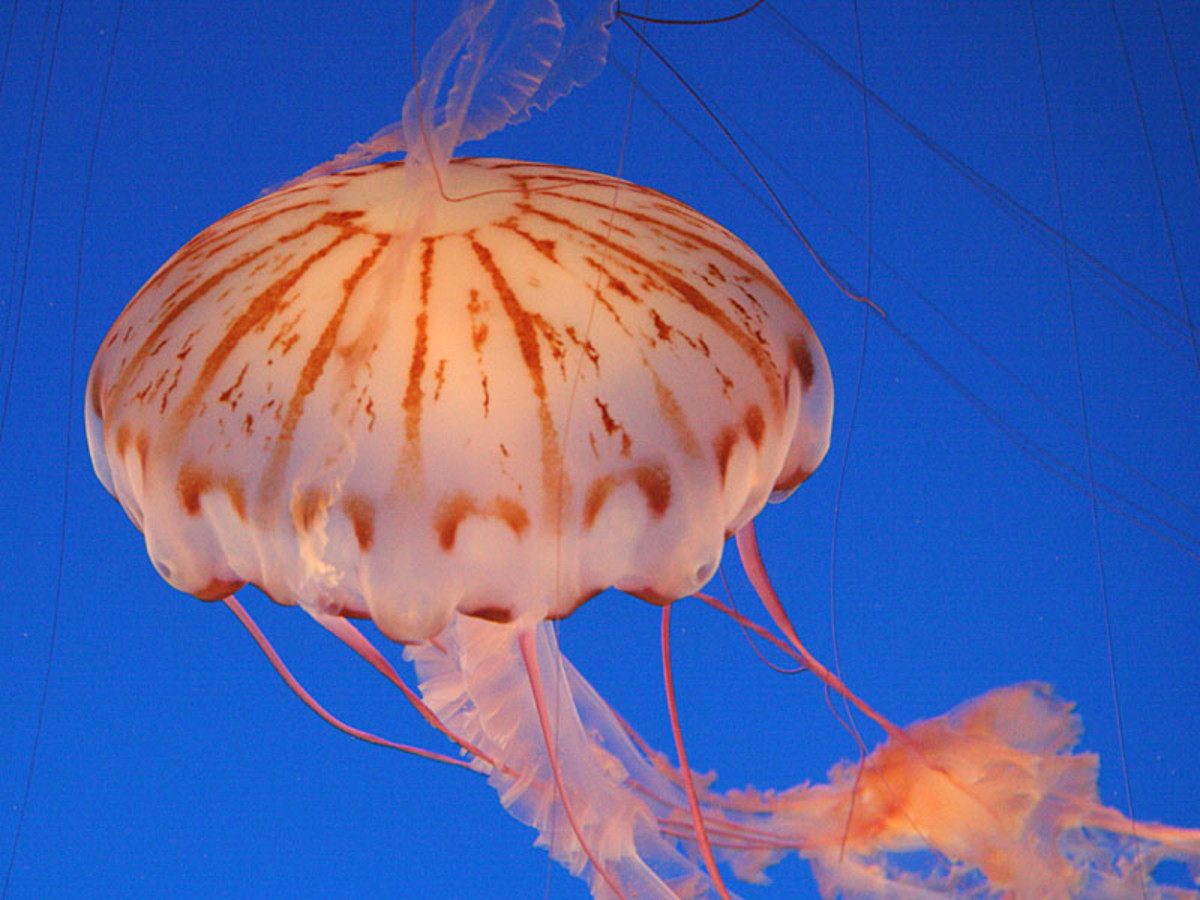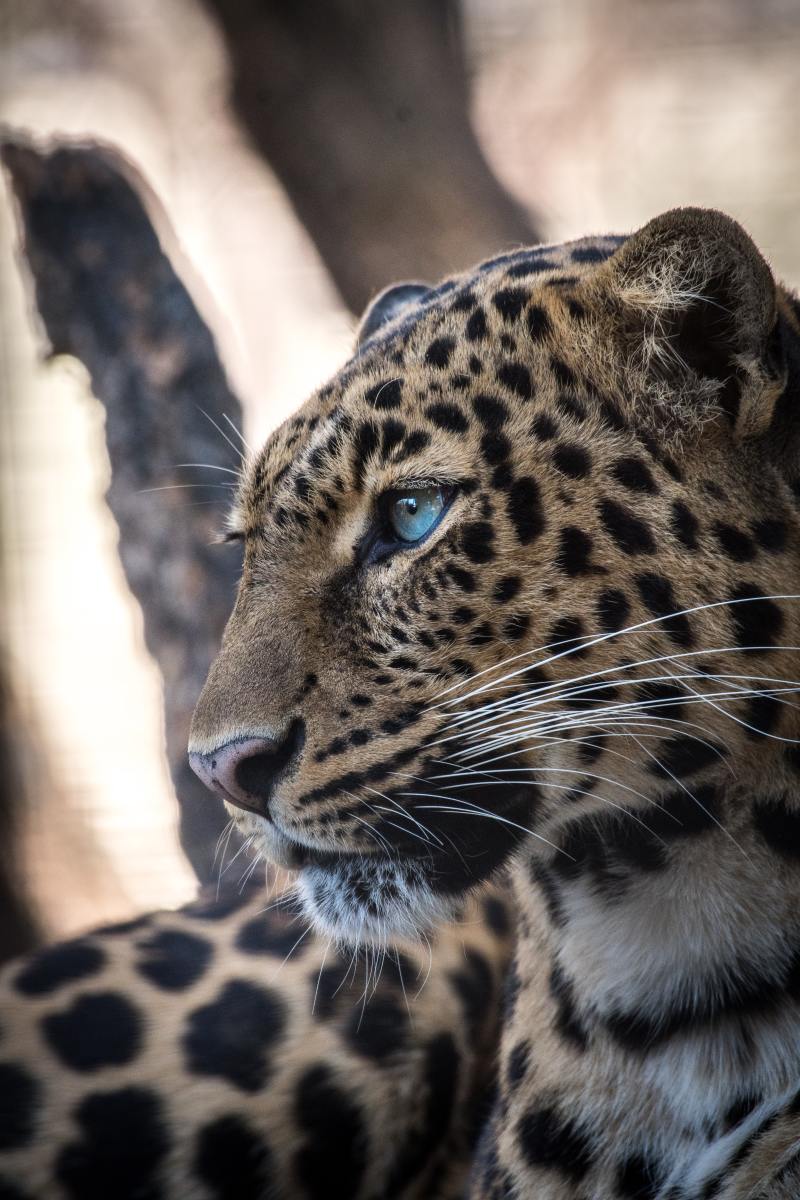The World's Wolves
Two Drastically Different Canines
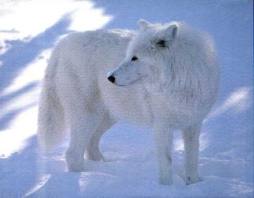
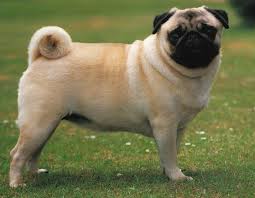
Seven Species of Canis
Canis is the genus that holds most of the large wild dogs. They are called by several different names. Some are known as jackals, some as wolves and others as dogs. As a group, though, these animals could all be called wolves, although "canines" is the more common identification. The seven animals are: the gray wolf, the red wolf, the Ethiopian wolf, the coyote, the golden jackal, the black-backed jackal, and the side-striped jackal.
All of these animals are somewhat social. All seven form packs, but the three jackals do so much less often than the others. Packs are formed around a dominant pair and several of their adult offspring. Less often, other unrelated adults will join the alpha pair.
Canines are found around the world. Jackals live throughout Africa and western Asia. The coyote and red wolf inhabit North America and share their range with the gray wolf. The gray wolf (in its original form) has a range that extends throughout the northern hemisphere, from the United States and Canada to Russia and Europe. Another form of the gray wolf, the domestic dog, is one of the most widespread animals on earth. The dingo is a wild version of the domestic dog that roams across Australia.
Types of Grey Wolf
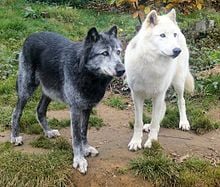
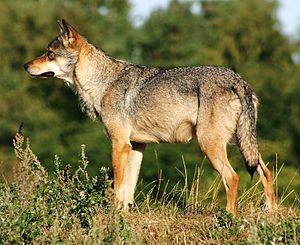
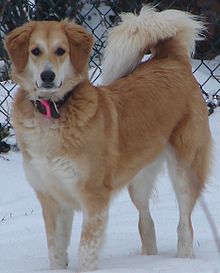
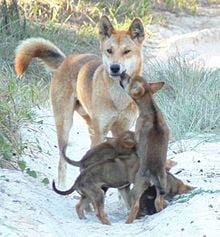
Gray Wolf - Canis lupus
In It's Natural Form - Canis lupus
Even in it's original form, the gray wolf is the widest ranging wild dog in the world. Gray wolves can can be seen throughout North America, Europe, and Asia. They inhabit such diverse habitats as the American prairies and the jungles of India.
Packs of wolves hunt an extremely diverse range of prey. Everything from rabbits to deer to large cattle can be on the menu. Wolves use some of the most sophisticated hunting techniques in the animal kingdom. They are experts at dividing herds of large animals to target the weak and young animals.
Gray wolves have a huge variety of sizes and colors. Short-haired, multicolored wolves can be found throughout lower Asia and longer-haired species can be found in the more temperate climates. Pure white wolves are the normal in the arctic areas of Russia, Europe, and North America.
The Domestic Dog - Canis lupus familiaris
Sharing the species lupus is the descendant of the gray wolf, the domestic dog. While the gray wolf is the most abundant species of canine, the domestic dog is probably the most widespread species of animal on earth. Nearly every continent and every environment has a population of domestic dogs. Everywhere there is a human population also has a dog population to go with it.
The abundance of breeds of domestic dog are extremely diverse. The extremes of sizes and shapes are incredible. Dog breeds can be much smaller than their wild ancestors as well as much larger.
Throughout their range, dogs have broken their domestication and formed wild sub-populations. These feral dogs have often wreaked havoc on the natural ecosystems, endangering many wild animal populations through hunting. Another danger that is posed by feral dog populations is interbreeding and interfering with wild canine gene pools.
Dingo - Canis lupus dingo
A very obvious example of the danger of human-introduced canines can be seen with the dingo. Dingos are wild descendants of dogs that were once owned by the Australian Aborigines. When the migrating Aborigines reached Australia, some of their dogs turned feral and quickly took to their new environment. It wasn't long before these wild dogs took over the role of top predator throughout the entire continent. In the few thousand years since the dingos were introduced, many Australian species have gone extinct and others are still endangered.
However, the dingo is also an example of how fluid ecosystems can be. Despite the enormous impact that the dingo had on the Australian habitat, they have quickly become part of the Australian fauna. Most of the animals that live in Australia have become adapted to the new predator and the ecosystem has seemed to balance out.
The Spiritual Side Of Wolves
Arctic Wolf Pack Attacking Caribou
Golden Jackal
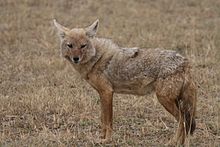
Golden Jackal - Canis aureus
Despite its name, the golden jackal is more similar to the gray wolf and coyote than to other jackals. It is very adaptable, and fills a similar niche as the coyote throughout its range. Its range is considerable, touching three different continents. It is most common in northern Africa and southern Asia - but it is also present in the southern part of Europe and Russia.
They are generally less social than other canines - only forming packs on the rarest of occasions. More often, they are seen in breeding pairs.
Golden jackals are extremely opportunistic animals. They will feed on just about anything - from garbage to carrion to wildebeest afterbirth. Generally, most jackal populations prey on rodents, hares and other small animals
Differences In Coyote Populations
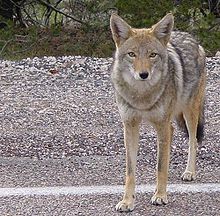
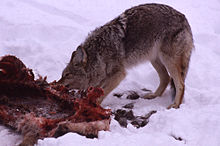
Coyote - Canis latrans
Coyotes are the smallest of the three American wolves. They are also known as prairie wolves and American jackals. Like the golden jackal, the coyote is very opportunistic and adaptable to a variety of environments. It can be found in environments ranging from the southernmost part of Mexico to the northwestern part of Alaska and the eastern part of Canada.
Because of the variety of their habitats, coyotes have a wide range of fur lengths - similar to the gray wolf.
Coyotes' social behavior tends to be closer to the golden jackal than the gray wolf. While they do form packs on occasion to hunt larger game, their structure is less stable. More often they're seen living alone or in pairs.
A wide variety of prey is taken by the coyote. Rabbits and hares make up the majority of its meals. The balance is made up of rodents and small animals, game birds, and (far less common) deer. Occasionally, livestock is attacked as prey, bringing this canine a less than desirable reputation.
Another similarity to the golden jackal is the coyote's willingness to interbreed with domestic dogs. Offspring from these crossbreeds are called "coydogs."
Coyote Showing Its Remarkable Survival Skills
Red Wolf
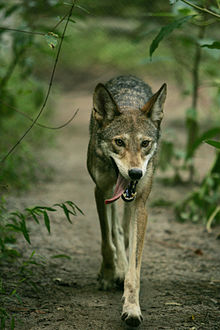
Red Wolf - Canis rufus
In 1980, the last wild red wolf was killed. Seven years later, the red wolf began being introduced back to their former habitat. Still, they are extremely endangered and only inhabit a trace of their former range.
There's a lot of debate about whether the red wolf is a valid species of Canis or not. Some zoologist believe that it is actually a hybrid of the coyote and wolf. However, since no interbreeding of these two species has been observed in the wild - the red wolf''s standing as a unique species still stands.
Physically, red wolves are slightly larger than the coyote, but still smaller than the gray wolf. They have a short fur coat and much more slender proportions than their larger cousins.
Like the gray wolf, the red wolf is social and readily forms packs. These packs have a typical makeup - an alpha pair and their adult offspring.
White-tailed deer and cottontail rabbits make up the majority of the red wolf's diet. Other prey includes wild boar, raccoons and small rodents. The primary factor leading to its extinction was its habit of preying on livestock. Sadly, this wasn't nearly as common as was believed. Many coyote attacks were blamed on the visually similar red wolf.
Wolf Products On Amazon
Side-Striped Jackal
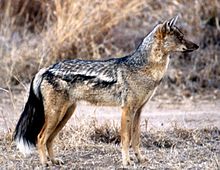
Side-striped Jackal - Canis adustus
The side-striped jackal lives throughout central Africa. Its habitat is normally wooded areas with plenty of water. It is never seen on the savanna, preferring areas with plenty of vegetation. It lives in areas like this partially for cover and places to hide and partially for a major food source - fruits.
Side-striped jackals are omnivorous. They would just as quickly feed on fruits and other plants as they would other animals. These jackals hardly ever take live prey. When they do, it's usually small animals and invertebrates. More often than taking live prey, side-striped jackals will scavenge on carrion and even human garbage.
They are usually solitary animals. Rarely, in areas with plenty of food supply, they will form loosely-structured packs. It much more common to find them in mated pairs.
Ethiopian Wolf
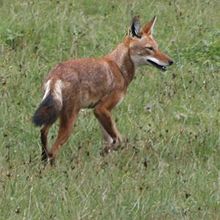
Ethiopian Wolf - Canis simensis
The Ethiopian wolf is a highly endangered canine - with fewer than 500 animals currently living. These inhabit several isolated areas - with the most densely populated area containing a mere 150 wolves. Although they form packs of up to fifteen individuals (the average is eight to ten), each individual does their hunting and foraging alone. These wolves only join up during the breeding season and to patrol the pack territory.
Because they hunt alone, the size of the prey is drastically reduced. Occasionally young antelope are taken by surprise. Much more common prey animals are rodents, other small mammals, ground-nesting birds, and even invertebrates.
Many scientist believe that the Ethiopian wolf is a descendant of the gray wolf - similar to the domestic dog and dingo. If this is the case, and the Ethiopian wolf is in fact a subspecies of gray wolf - it would expand the wild gray wolf's range into Africa as well.
Black-backed Jackal
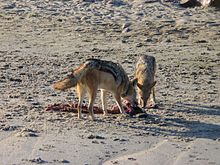
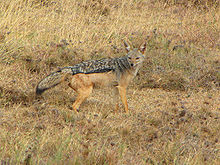
Black-backed Jackal - Canis mesomelas
The black-backed jackal has two distinct populations in isolated ranges. One inhabits the eastern part of Africa while the other lives in the extreme south. They are also known as the red and silver-back jackals.
Black-backed jackals are generally considered to be the smallest species of canine. Like the golden jackal, the black-backed jackal can be found in packs as well as alone.
Prey is typical of jackals. Rodents, small animals, and birds are commonly fed on. Far less often, the black-backed jackal has been observed to attack and kill highly venomous snakes like mambas and cobras. Like the side-striped jackal, it will even forage among fruits for food.


